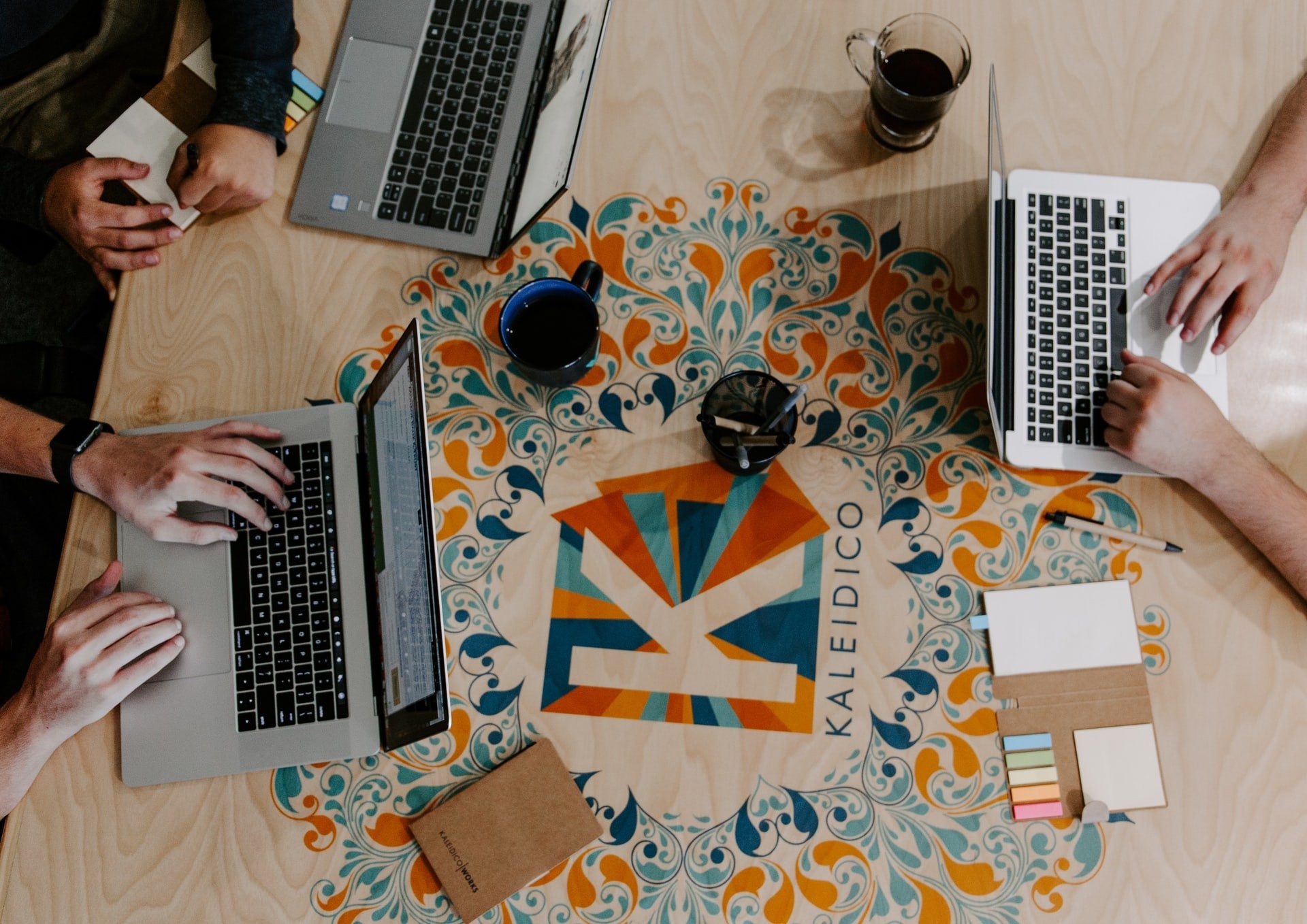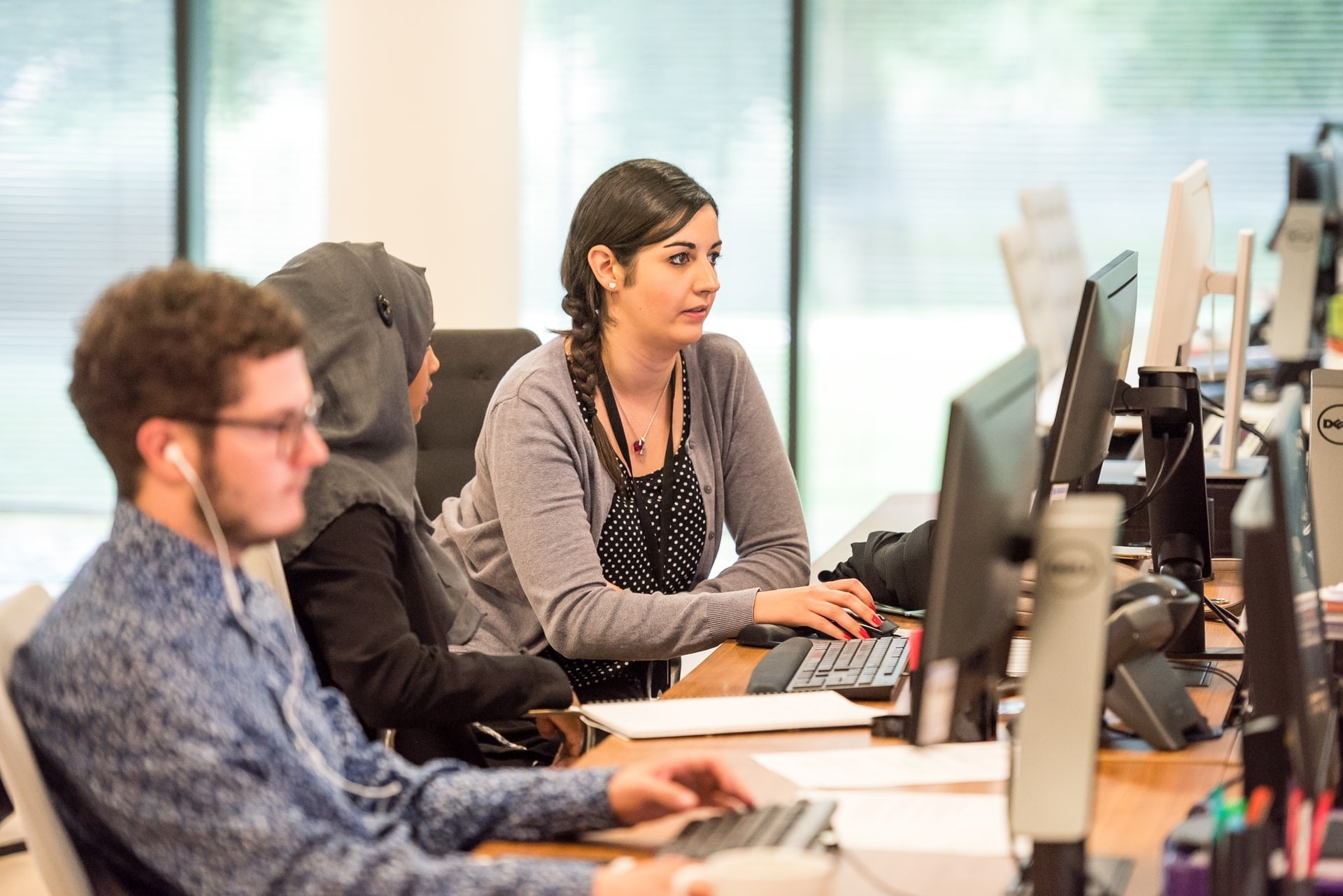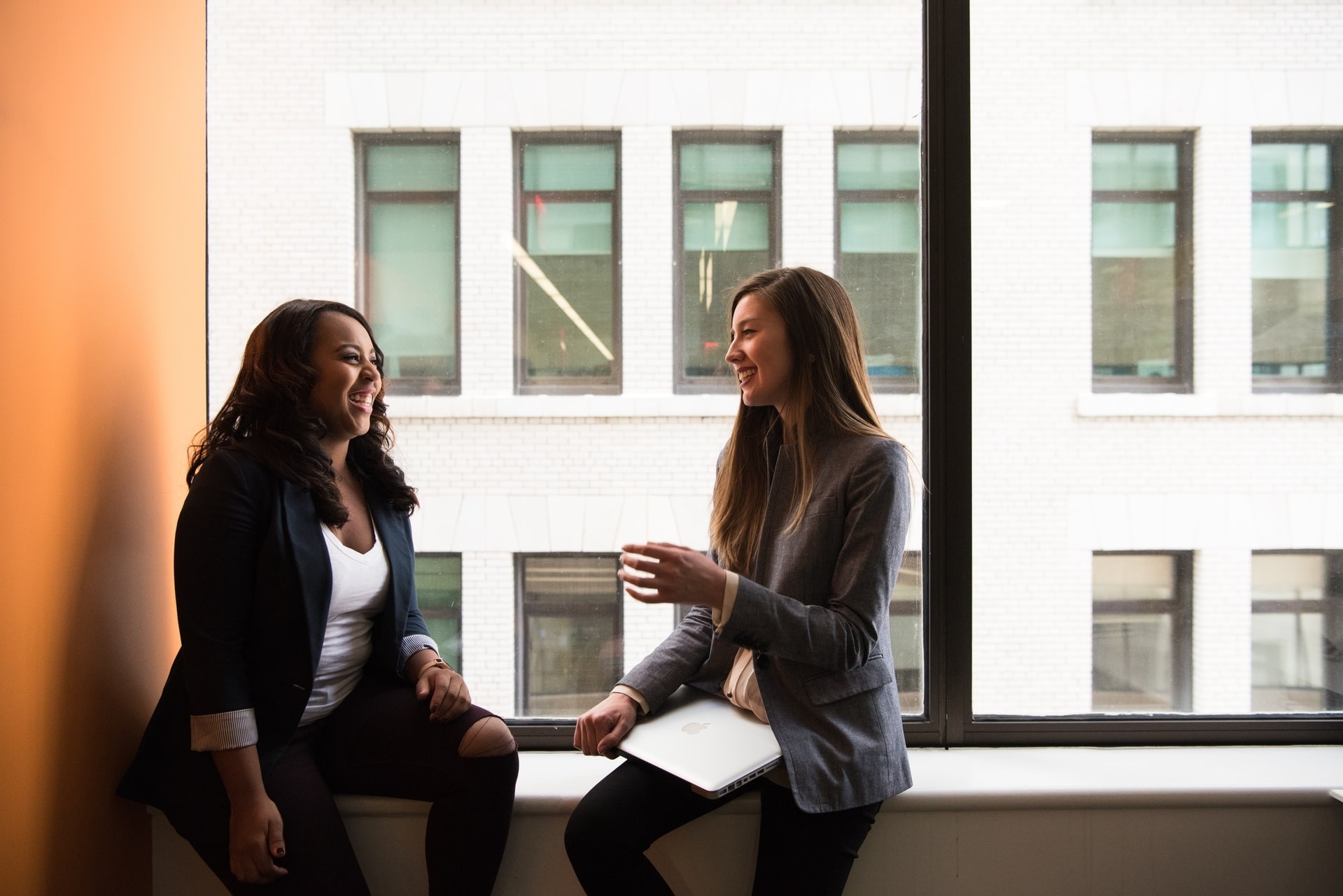Unconscious Bias Training
Ready to implement an unconscious bias training for your workplace? Organisational behaviours expert Ros Cardinal will discuss the human instincts that drive our thinking, explore some of the common unconscious biases that impact the workplace, and provide key take-aways for challenging the barriers to creating and valuing diversity at work.
Book Your Session NowUnconscious Bias Training
Most people understand bias. We know that if we are biased against something or someone, we are not in favor of it or the person and if we are biased toward something or someone we are in favor of it or the person.
We know that our biases influence our decisions and how we treat others. And that knowledge means that we can do something about it to become more objective and make better decisions.
The problem arises when those biases are unconscious. In other words, when we are not aware of the subjective thoughts, attitudes and feelings that are affecting our behavior.
The Difference Between Conscious Bias and Unconscious Bias
Bias, conscious or unconscious, is a prejudice in favor of or against something, a person or a group. Society is very aware of conscious or explicit biases, which have been and are still being addressed.
Biases based on age, gender, gender identity, social status, ethnicity, religion, disability and other attributes have been addressed with laws and policies to prevent unfair treatment due to these and other biases.
For instance, the world has come far in addressing prejudice against women. People no longer think that women can’t be truck drivers or software developers. Women can lead countries and scientific teams, and even play soccer or sail solo around the globe.
Unconscious bias, on the other hand, is a prejudice that exists outside of conscious awareness and is therefore much more complex to deal with. Unfortunately, unconscious bias is more prevalent than conscious judgments. Our unconscious biases can be confusing when we become aware of them for the first time, because they often contradict what we stand for. In other words, a mother may honestly believe that she is not a racist, and yet feel uncomfortable when her son starts dating a girl from another race.
Unconscious bias happens instantaneously and is often based on subjective judgment influenced by what we think we know about the person or situation, and not the objective truth.
How Biases Are Formed
Why do biases exist in the first place and where do they come from? Biases are our brain’s way to make sense of the overload of information it receives. The human brain receives 11 million bits of information per second for processing, yet it seems conscious of only 50 bits of information per second. The brain uses bias as shortcuts to deal with this huge amount of information.
Biases come from our upbringing and what we’ve learned from our parents and the wider community; our own experiences; what we learn at school; the books we read; the media, and other influences.
In the sense that we are all born in a household and a society where stereotypes already exist, we can’t escape the fact that we all have biases.
Every time we are faced with a person, group or situation, we mentally match them with the preconceived mental idea we have about them, without seeing the situation for what it is. We simply come to an automatic, undisputed conclusion about the person, group or situation we find ourselves in.
Individuals, groups, and institutions can hold biases, which can have negative or positive consequences.
People are not just biased about things like color, race, gender, religion, or sexual orientation. Anything about a person can be the subject of a bias – a person’s tone of voice, how they eat or dress, what they spend their money on, etc.
Unconscious bias is not intentional. It’s an unconscious stereotypical thoughts that have been formed in our brains through years of different influences we often had no control over.

What Is Unconscious Bias Training?
Unconscious bias training is diversity education that highlights unconscious stereotypes so their unwanted effects can be avoided. The idea is that once one becomes aware of the unconscious biases you hold, you can try not to let it influence your decisions and behavior.
Unconscious bias training demonstrates how biases originate outside of conscious awareness. The training shows how from an early age, the brain gathers and stores information about other people. It happens through early socialisation in the home and at school, who we mix with, and other influences like news broadcasts, and social media.
Then, later, in interaction with others, the brain uses this information to make swift judgments about others without consciously thinking about it.
Trainees learn that everyone has biases and that they didn’t have conscious control over the influences that formed their unconscious judgments.
There is no standard format for bias training. Some of the trainings use actual scenarios from the news that had serious consequences due to racial discrimination. The Seattle Starbucks case is a favorite example used in trainings. Other trainings use videos that illustrate scenarios where the participants are showing unfair judgments. Some trainings simply consist of PowerPoint slides.
While some may believe that unconscious bias training doesn’t work, this is mainly because individuals often walk out of such trainings feeling blamed. What facilitators must do is normalise bias. After all, we are human and thus have biases that are instinctive and tribal. Once people feel that it is a safe space to explore bias without feeling trapped, blamed, or made to feel at fault, real conversations can happen.
That said, companies can’t depend on bias training alone to solve discrimination in the enterprise. Training must be supported by the standardisation of company policies, protocol, and procedures. Policies that have unequal effects on people of different races, people with disabilities, different sexual orientation, or other attributes should be addressed.
Why Is Unconscious Bias Training Important?
Unconscious bias is problematic because it can lead to discrimination. Discrimination happens when we act towards others based on our unconscious or implicit biases.
For instance, if a landowner is biased against same-sex couples, he might discriminate against them by refusing to let his property to them. The opposite can also happen. If he is biased toward same-sex couples, he might choose to rent to them and ignore applications from heterosexual couples.
The effects of unconscious bias play out in the workplace every day with many unwanted and far-reaching consequences.
Our biases don’t only affect how we think and feel about other people. Our biases affect how we perceive certain individuals and groups, and how we interact with them. In group situations, our unconscious judgments determine who we listen to and support and who we ignore.
In the workplace, when an employee doesn't fit a manager’s expectations, the manager might not realise the employee’s potential or understand what motivates them. Such an employee won’t reach her full potential and the company will miss out on valuable talent.

What Can Unconscious Bias Training Help With?
Apart from preventing discrimination in the workplace, unconscious bias training can benefit workplaces in the following ways.
-
Foster an inclusive workplace
Greater awareness of unconscious bias can help to modify attitudes and behavior so more people with diverse attributes feel welcome and empowered to do their work and openly share their diverse perspectives. This is beneficial for companies.
Research studies have shown that organisations with the most ethnically diverse executive teams are more profitable. Also, companies that have more female executives perform better than those that have fewer female executives.
-
Avoid public blunders
In 2018 Starbucks apologised and announced it would close more than 8,000 of its stores in the United States to provide racial-bias education for its 175,000 employees. Starbucks took the action after one of its store managers called 911 and had two black customers arrested. This unfortunate event could probably have been avoided if employees had received bias training.
-
Improve morale
Employees who feel welcome and safe are happy to be at work. They work harder and are more productive. They are not afraid to give their opinion and will initiate projects. When employees feel happy and work hard, the general morale improves.
-
Increase Innovation
This goes hand in hand with the previous point. Employees who are not afraid to speak up will be more inclined to bring their talents and ideas to the table. They may come up with a solution for a product or service that other employees may never have thought of. Diverse groups tend to come up with diverse solutions to challenges that their companies face.
-
Reach more markets
Inclusive teams that comprise diverse cultures and LBGTQ individuals create products, services, and solutions that are appealing to more demographics. This means the company can market its offerings to more markets and attract more customers, raising its competitive advantage.
-
Improved recruitment practices
Through unconscious bias training, employees responsible for recruitment can become aware of how their unconscious biases can twist their decision-making.
For example, when a qualified candidate is overlooked for a position because of their slow speech, the college they studied at, their accent, or race, not because they don’t have the skills necessary to perform the job.
-
Improved relationships
Unconscious bias training can make people aware of what behavior may be inappropriate and how to avoid it. Just like unconscious bias is not intentional, our actual behavior that others may find offensive, is not necessarily intentional. Bias training can help employees to be more sensitive to how others may feel about or react to their behavior based on their gender, race, age, ethnicity, sexual orientation, or other attributes.
-
Enhanced reputation
Companies that are known for training their employees in self-awareness, including awareness of their unconscious biases, build inclusive teams, which are highly sought-after in today’s marketplace. Inclusive companies enjoy a reputation as a workplace of choice for many applicants.

Tips for Successful Unconscious Bias Training
- Bias and discrimination are sensitive issues, so they are difficult to talk about. Bias training facilitators should take this into account and expect resistance from trainees.
- Plan on having repeat training sessions. It is impossible to permanently change stereotypical judgments that have been held for a lifetime with one-day training. Companies can’t realistically expect to undo unconscious bias, of which there are so many, in one day. For bias training to be effective, it must be repeated often.
- Start by creating awareness. Explain how unconscious bias originates and make sure that attendees understand that we all have biases and that it is not something to feel guilty about, but to be aware of. Illustrate the undesired effects of biases through real-life examples. Don’t just focus on racial discrimination. Find examples of discrimination based on other attributes like gender, sexual orientation, disability, age, personal appearance, which state a person comes from, nationality, and others.
- The training should not just be a lecture about bias, stereotypes, and discrimination. Bias training in the workplace should be about workplace scenarios. When employees are exposed to scenarios they can recognise and might even have experienced, their learning will be more effective. They can clearly see where unconscious bias is affecting decision-making that results in discrimination.
- The training should provide trainees with actionable steps they can take to prevent their interactions from being influenced by their biases.
- We learn best by doing. Create a safe space where trainees feel free to participate in an open discussion. People learn better when they hear about other people’s real-life experiences.
- Consider using a company that offers training via simulations. These programs let trainees interact with facilitators and simulated real-life situations that portray situations that develop in workplaces.
- Make sure that employees understand that biases are integral to who we are as humans – it’s not something we can get rid of with one training. Let them know that you will continue to address the issue and they must too, at their place of work and in their personal lives.
Unconscious bias training will be pointless if company policies, protocols, and procedures are not standardised. For instance, those responsible for recruiting should be made aware of how different biases can impact their recruiting decisions. Recruitment should be based on objective and quantifiable measures and that should be clearly reflected in recruitment policies and procedures.
Unconscious bias training is necessary because implicit bias can lead to discrimination in the workplace, which can lead to unfair treatment of some employees.
However, since we are not always aware of our biases and have had them for so long, bias training is tricky and doesn’t always succeed. For these and other reasons, it’s important to do unconscious bias training on a continual basis.
As we continue with these discussions, we will become more aware of the unfair judgments we make. Ideally, we should eventually succeed in creating a more inclusive society where everyone feels welcome and valued.
Testimonials
"Ros is a skilled organisational development executive, who has a great understanding of learning styles and leadership development. She is an effective facilitator of groups, and has been involved in both the design and delivery of in-house leadership programs. She is energetic, and is a good listener and communicator."
-Peter Davis
"I've found Ros to be an amazing coach and mentor, her strategies and insights have helped me across a range of roles, both as leader and team member. She has the ability to get to the heart of the organisation's issues and to provide practical, workable strategies to drive change forward. Her insights around personality types and how they affect workplace behaviour are especially useful. I have greatly benefited from the learnings I've gained both from working with Ros one-one-one, and from my membership of the Inner Circle."
- Selina Spowart, MONA
"Ros has a natural ability to draw the best out of people in a professional and business-like manner, but with a lighthearted friendly touch. She deeply believes in the capacity of everyone she works with to achieve big and on-purpose. I envy her facilitation skills and enjoy watching her work a room!"
- Angela Driver, Tasmanian Leaders Inc.
About Ros
Rosalind Cardinal is the Managing Director of Shaping Change, a consultancy specialising in improving business outcomes by developing individuals, teams and organisations.
Ros is an outstanding facilitator whose passion is evident in her work. She is able to engage and empathise with her audience, while providing challenging insight that encourages people to think outside parameters. She has a unique skill set that combines an incredible depth of facilitation and training capability with strategic understanding. With this she becomes instrumental in both shaping a strategy and also then translating that strategy into creative, engaging and high impact organisational initiatives
Ros’ many certifications include LSI/GSI/LI and OCI/OEI (Human Synergistics), Mayer Salovey Caruso Emotional Intelligence Test (ebpsych), Myers Briggs Type Indicator Step 1 and 2 (APP), 4Mat Learning Type Measure/Hemispheric Mode Indicator/Leadership Behaviour Indicator (4Mat Aust.), Lencioni’s 5 Dysfunctions of a Team, The Leadership Practices Inventory, Benchmarks and Skillscope (CCL), Political Intelligence and Conversational Intelligence®. Ros is also a certified Change Management Practitioner, an accredited practitioner in Human Instincts, an accredited Appreciation at Work facilitator and a certified Neurocoach and Neuroleader. Ros is a Certified Member of the Australian Human Resources Institute (CAHRI), a member of the Australian Institute of Training and Development (AITD) a Professional Member of the Australian Association for Psychological Type (AusAPT), a member of the Australian Institute of Company Directors (AICD) and a member of the Neuroleadership Institute. She holds a Graduate Diploma in Human Resources from Deakin University, an Australian Human Resources Institute Professional Diploma in Human Resources and has completed the Australian Graduate School of Management Executive Program, Strategic Human Resource Management.
In addition to Ros’ own blog, she is a regular contributing writer for Leaders in Heels, The Huffington Post, “Thrive Global”, and “People Development” Magazine. Ros’ business story is showcased in the 2014 book “Australian Entrepreneur”. In 2016 Ros released her bestselling and award nominated book “The Resilient Employee: The essential guide to coping with change and thriving in today’s workplace”.
Shaping Change has been a finalist in the Australian Small Business Champions Awards every year since 2015, and in 2015 Ros was a winner in the Australian Edupreneur Awards (Business Consulting category). In 2016, 2017, and again in 2018, Ros was awarded Leadership Coach of the Year – Australia by Corporate LiveWire in their global Innovation and Excellence Awards. In 2020 Ros was a finalist in the prestigious Telstra Business Women’s Awards. In 2021 Shaping Change was a finalist in the Australian Institute of Training and Development Training Awards for the best Diversity and Inclusion program. In 2022 Corporate LiveWire awarded Shaping Change Executive Coaching Service of the Year – Australia and Ros was a finalist in the inaugural Australian Women’s Small Business Champions Awards. In 2022, in a career highlight, Ros was a recipient of a World of Difference Award from The International Alliance for Women (TIAW). These awards recognise extraordinary women and men from around the world who have contributed to the economic empowerment of women.


